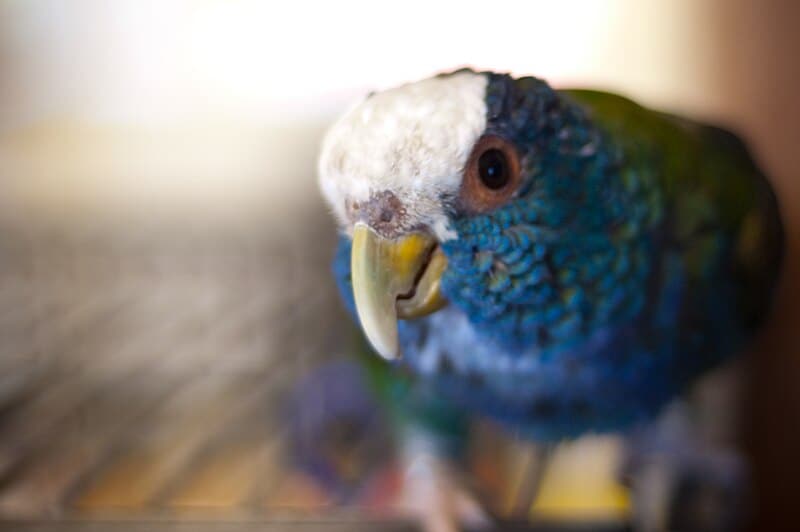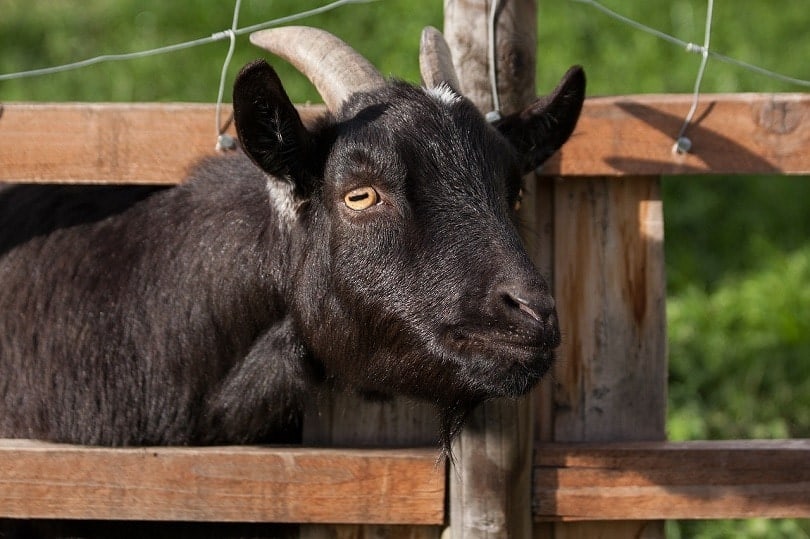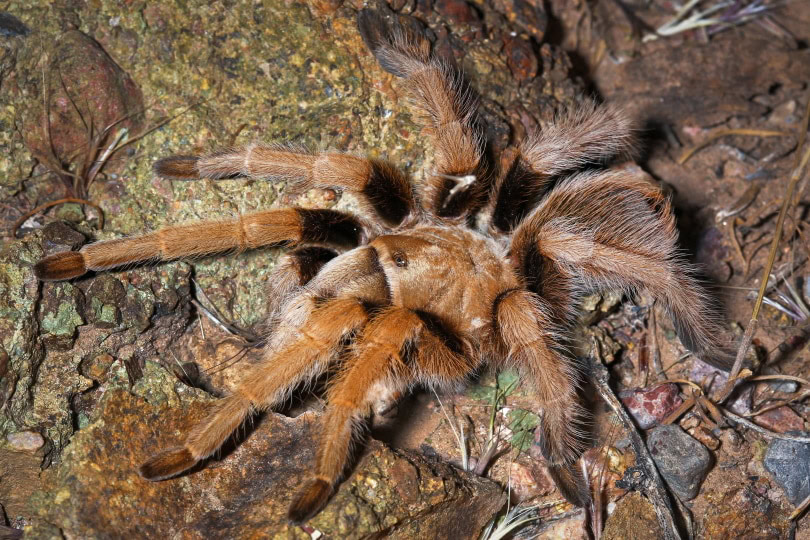These intelligent and curious little birds do have a somewhat stronger personality than most other Pionus species, but with good attention they can make fabulous family pets! They are quick to learn and can be taught a variety of tricks. Although they are rather quiet and shy they do have some talking ability.
Scientific Classification
| Kingdom: | Animalia |
| Phylum: | Chordata |
| Class: | Aves |
| Order: | Psittaciformes |
| Family: | Psittacidae |
| Genus: | Pionus |
| Species: | senilis |
Scientific Name
Distribution
These birds are native to Central America from southwestern Mexico to western Panama.
Description
The White-crowned Pionus, also know as the White-capped Pionus or White-capped Parrot, is one of the smaller of the Pionus species. They are a small to medium size parrot with a wonderful personality.
They are generally green with a paler and more yellowish green on the underside. True to their name, they have a white cap on their forehead as well as a white patch under their chin and throat. The rest of the head is blue and the breast has olive-brown feathers edged with darker purplish-blues, gradually turning green across the abdomen. They sport a variety of colors on the tops of the wings from golden browns, violet-blues, blues, to greens and the underwing is a bluish green moving to a dull green. The tail is green tipped with blue and blue on the outside with the undertail having the bright red feathers distinguishable to all the pionus. The beak is a horn color, the eye is dark brown to orangish circled by a light pinkish-white eye ring, and they have pink legs.
Juveniles are paler in color, have much less white on the cap, and very little or no blue on the head.
Size – Weight
These birds are a smaller Pionus and grow to a length of 9″ (24 cm).
Care and feeding
A roomy cage is required unless the bird is to be let out for extended periods. Many birds can spend a good deal of their time on a play pen or parrot perch. They do enjoy showering.
They eat a variety of seeds, fruits, berries, and greenstuffs. Including a formulated diet would also be beneficial.
Social Behaviors
In the wild they are generally seen small flocks of up to about 15 birds. These birds tame very easily and are very sociable. They are not loud like many conures and amazons. They have very steady personalities and do not tend to bite.
Breeding/Reproduction
There is no visible means of sexing these birds. They are successfully bred in captivity. Place a nest box high up in a dark area of the aviary. The female will lay up to 5 eggs which incubate for about 26 days. Pairs may take mealworms and greenstuffs when they have chicks in the nest. Corncob is a favorite weaning food. The young leave the nest by the time they are eight weeks old.
Potential Problems:
The White-crowned Pionus is a relatively healthy bird, though the Pionus parrots have been known to be more susceptible to the infection aspergillosis than other species. The main symptom is heavy, belabored breathing.
Availability
This bird is available from time to time. They are becoming increasingly popular and are widely kept.
The other two most frequently available pionus are the Maximilian’s Pionus, and the Blue-headed Pionus.
Pionus senilis (Image Credit: Mike Tungate, Wikimedia Commons CC BY-SA 2.0 Generic)










